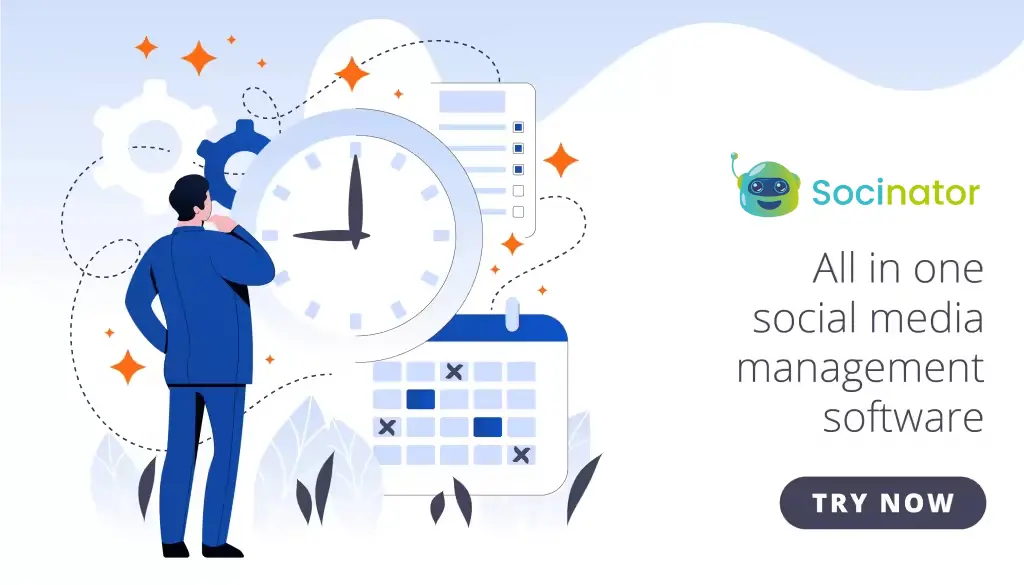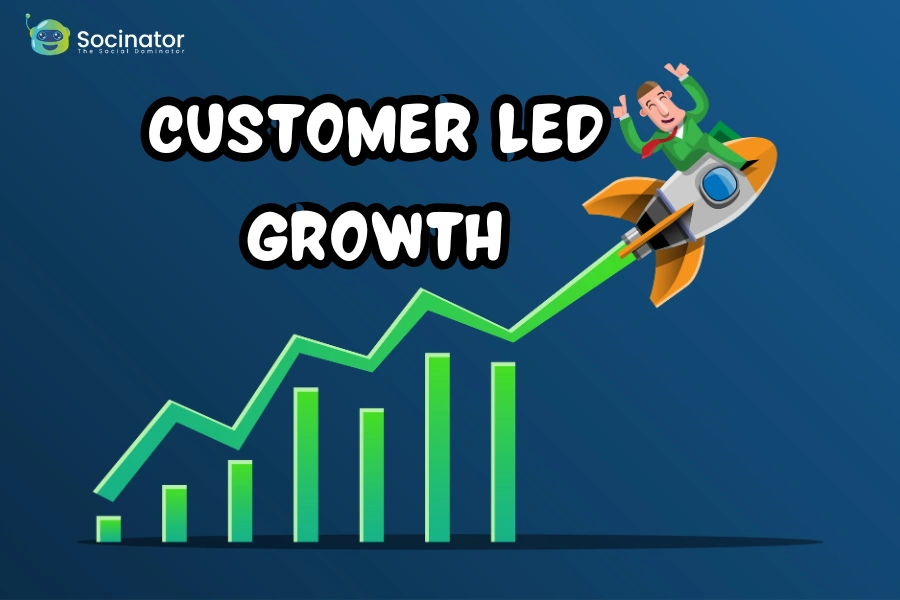Businesses and marketers face the constant challenge of producing high-quality content that engages and converts their target audience. The demand for consistent and timely content can be overwhelming, often leading to burnout and inefficiencies. This is where content automation comes into play.
Leveraging advanced content automation tools and technologies, allows you to streamline your content creation, management, and distribution processes, ensuring that your marketing efforts remain effective and efficient.
In this blog, we will explore the concept of content automation, its benefits, and practical strategies for implementing it in your marketing strategy to maximize productivity and drive better results.
Hit The Play Button And Listen To The Podcast Now!
What Is Content Automation?
Content automation involves using technology to streamline and optimize the creation, management, and distribution of content. It includes automating tasks like content creation, post-scheduling, material distribution, and performance analysis. By doing so, businesses can handle large volumes of content more efficiently, maintain consistency, and allocate more time to strategic activities.
Content automation will help accelerate the following processes:
- Creating content
- Managing content
- Distributing content
- Repurposing content
All these tasks are part of the content lifecycle, establishing a repeatable process that requires efficient management.
What Does Content Automation Do?
 Content automation offers marketers significant advantages in numerous situations. Here are some of its essential features:
Content automation offers marketers significant advantages in numerous situations. Here are some of its essential features:
Topic Identification:
Automating topic identification leverages natural language processing (NLP), a field of artificial intelligence (AI) that allows computers to comprehend and interpret written and spoken language. Content automation tools use this analysis of related terms to pinpoint the most relevant and high-performing topics.
Content Generation:
NLP is also used for automated content generation. This technology powers the familiar word prediction feature in most word processors. Full-scale content generation programs take lists of keywords and phrases to produce original, comprehensible text. Advanced tools can even create sound files or images from simple text inputs.
Content Personalization:
Automating personalized content goes beyond mere composition. Machine learning in advanced automation tools, like Adobe Experience Manager, considers additional factors such as the optimal time for reader engagement and customer interactions across all channels.
User Engagement And Tracking:
Monitoring user engagement with content automation tools helps avoid overwhelming customers with repetitive content. Scale your marketing efforts while making them more personalized. Track engagement using key personal data points like time zone, gender, or age to connect with customers individually and at scale.
Customer Experience:
Automation enhances customer experience beyond personalization. Customers receive quicker responses to their questions or concerns and have more positive brand interactions, which fosters deeper brand loyalty.
Social Media Coordination:
Social media marketing involves more than simply posting content. It includes managing responses, aligning content across different platforms, and monitoring user behavior related to trending topics. Using social media automation tools like Socinator to automate these tasks can save time, increase online engagement, and improve brand consistency. Socinator also helps with scheduling posts and stories, making it easier to manage and streamline your social media strategy.
Bulk Email Marketing Automated email marketing targets users based on customized demographics, allowing you to diversify marketing efforts while saving time. Drive revenue by delivering content to users who are interested in receiving it. AI tools and client data facilitate consistent, scalable, and personalized communication.
Proofreading And Editing:
AI automation for proofreading enables writers and editors to focus on specialized tasks. NLP technology scans text for grammatical errors and analyzes its style and tone, ensuring alignment with brand voice, message, and content goals.
Lead Nurturing And Scoring:
Collaborate with your sales team to implement automated lead-scoring algorithms, moving prospects more effectively through sales and marketing funnels. It increases internal process efficiency and boosts brand engagement.
Audience Building And Segmentation:
Automated AI functionality allows data segmentation based on customer engagement levels, age, or other demographics. Identify trends in customer behavior and create content based on those insights.
Performance Analytics Automation eliminates guesswork in performance evaluation, providing real numbers on every piece of content. Evaluate performance using metrics such as engagement, sales, ROI, and others. Be confident in your content’s effectiveness, backed by precise metrics.
Additionally, Socinator enhances this process by tracking insightful analysis and gauging social performance.
Socintor: Social Media Automation Software
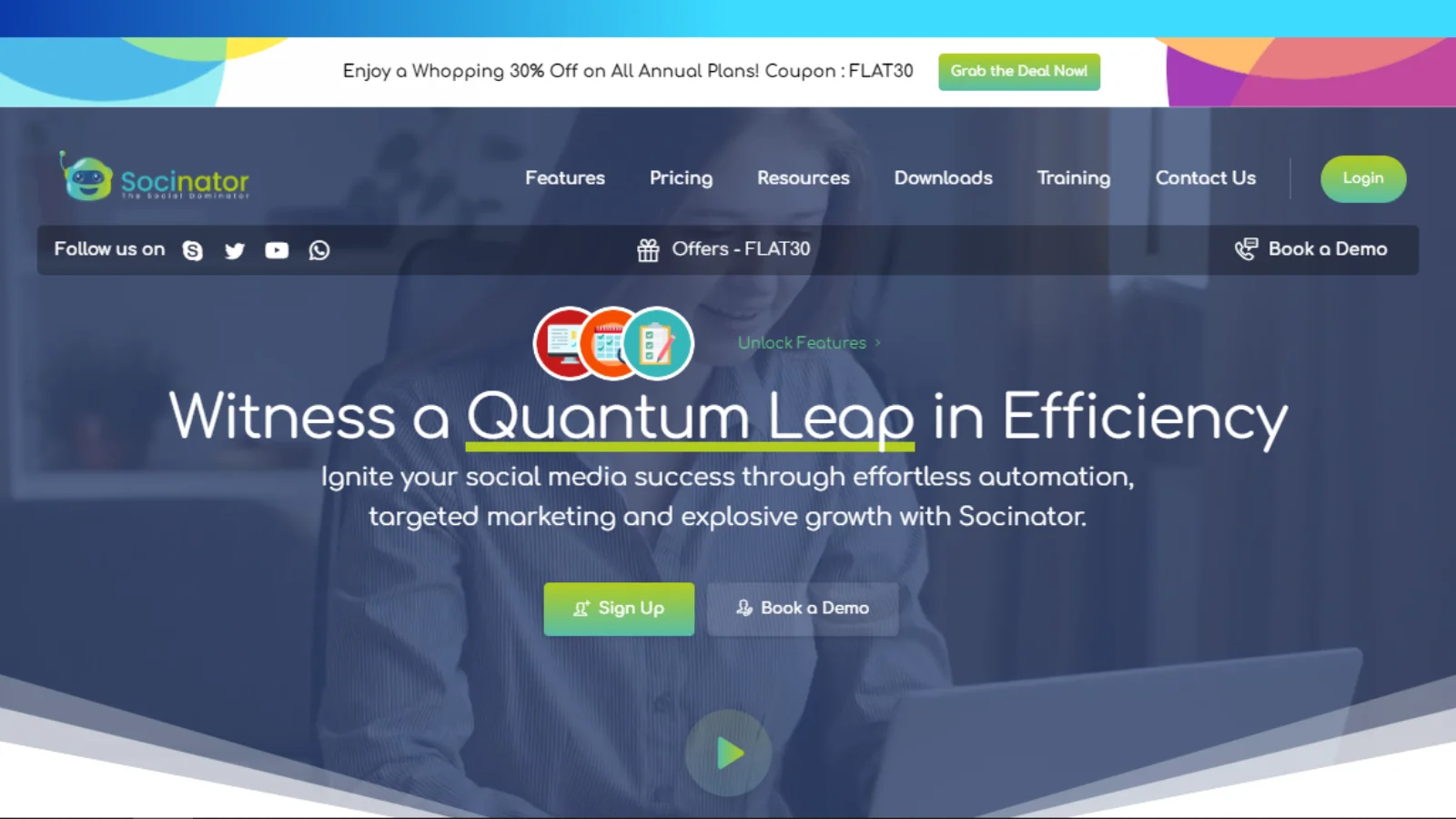 In social media marketing, staying on top of trends, engaging with audiences, and maintaining a consistent online presence can be challenging. Enter Socinator, a robust social media automation tool crafted to optimize and elevate your social media strategy.
In social media marketing, staying on top of trends, engaging with audiences, and maintaining a consistent online presence can be challenging. Enter Socinator, a robust social media automation tool crafted to optimize and elevate your social media strategy.
Socinator offers robust automation features that can streamline this process and enhance your social media strategy.
- Multi-Platform Management: Manage multiple social media accounts from a single centralized dashboard. Socinator supports various platforms, including Facebook, Instagram, Twitter, and LinkedIn, making it easier to maintain a cohesive social media presence across channels.
- Automated Scheduling And Posting: Socinator allows you to plan and schedule your social media posts and stories in advance. It ensures that your content is posted at the optimal times, even when you’re not online, helping you maintain a consistent presence across multiple platforms.
- Social Media Analytics: The tool provides in-depth analytics to track the performance of your posts, including engagement rates, reach, and follower growth. These insights help you understand what content resonates with your audience and refine your strategy accordingly.
- Engagement Tools: Automate actions like liking, commenting, and following/unfollowing based on set criteria. It boosts your visibility and engagement with potential followers, enhancing your social media presence.
- Customizable Reports: Create customized reports that cater to your specific needs. Whether you’re analyzing engagement metrics or evaluating campaign success, Socinator’s customizable reports provide a clear view of your social media performance.
Socinator’s automation features are designed to streamline your social media management, allowing you to focus on strategic activities while ensuring consistent and engaging content delivery. From scheduling posts and tracking performance to engaging with your audience, Socinator provides the tools needed to elevate your social media strategy and achieve your marketing goals. Embrace the power of automation with Socinator and take your social media presence to new heights.
Why Is Content Automation Important?
Saves Significant Time For Your Team
Content automation significantly cuts down the time spent on data collection, analysis, and presentation creation. Instead of manually gathering data from various sources, analyzing multiple reports, cleaning the data, and creating visuals for every presentation, automation streamlines the entire process.
For instance, the product marketing team previously spent a considerable amount of time on these tasks for a single presentation. With content management automation, the entire process can be managed with just a click in a chat platform, saving hours of tedious and error-prone work.
Enables Quick Identification Of Actionable Insights Across Channels
Content automation helps your team quickly create custom presentations that highlight important data across different channels. It allows for quicker identification of areas needing improvement and opportunities for testing.
Delivers Better Experiences For Your Target Audience
As you adjust your content strategy based on the insights gained through automation, your target audience-including customers, prospects, and investors will benefit from improved content. It leads to increased impressions, clicks, likes, followers, and a higher number of new and returning customers.
How To Automate Content Creation?
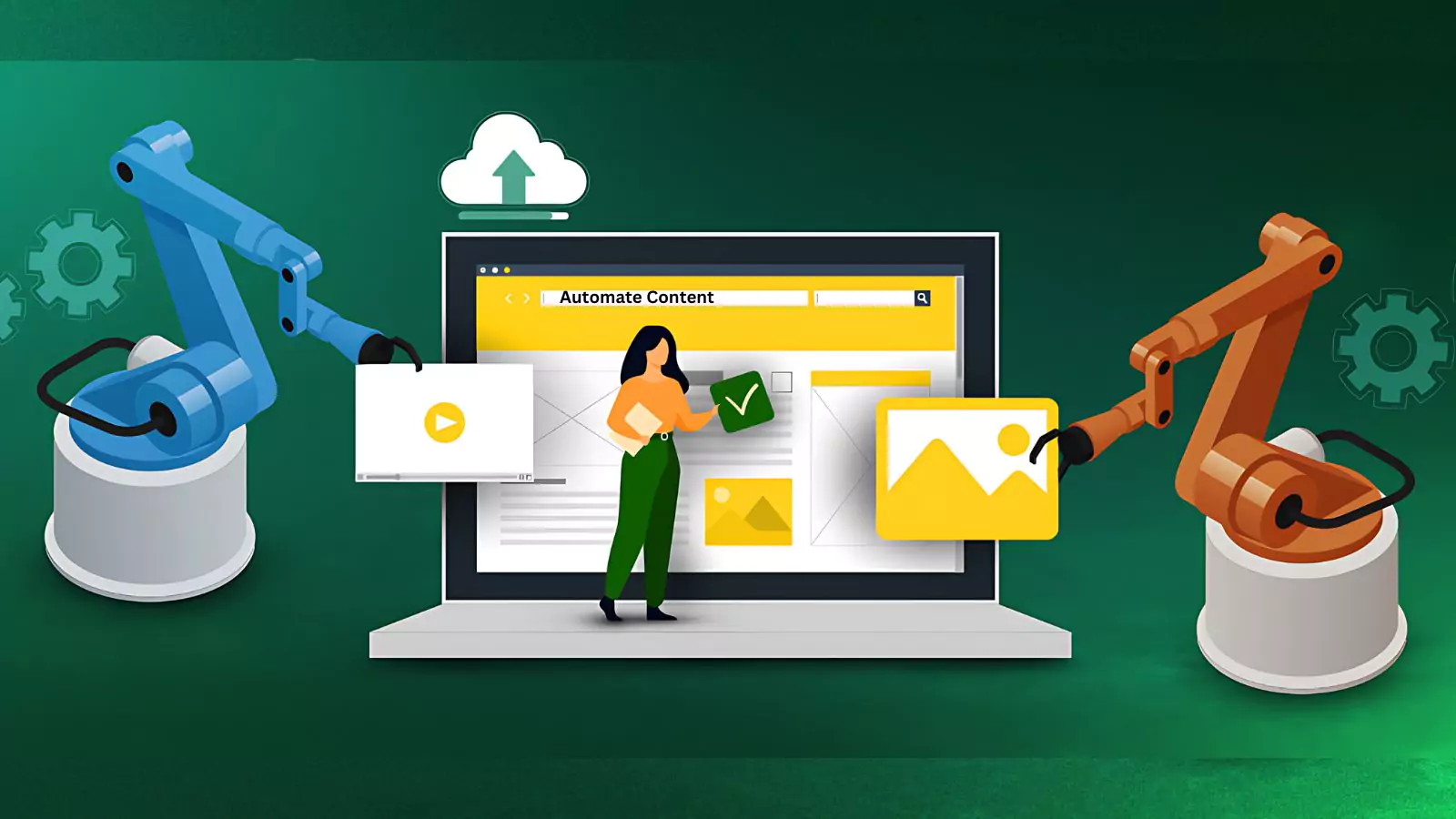 Automating content creation includes leveraging different tools and methods to simplify the tasks of creating, editing, and distributing content. Here’s a step-by-step guide:
Automating content creation includes leveraging different tools and methods to simplify the tasks of creating, editing, and distributing content. Here’s a step-by-step guide:
1. Keyword Research:
Utilize keyword research tools to discover pertinent topics, trending search terms, and content gaps. It will assist you in generating content ideas that match your audience’s interests and optimize them for search engines.
2. AI-powered Content Generation:
Leverage AI-powered tools, such as GPT-based language models, to create articles, blog posts, or social media updates. These tools can generate content based on your input, like keywords or topics, reducing time and effort in the creation process.
3. Content Templates:
Create and employ content templates to standardize the format, structure, and style of your content. Templates ensure consistency across various content pieces and streamline the creation process.
4. Spinning And Repurposing Content:
Use content spinning or rewriting tools to create multiple variations of existing content, making sure each version is unique and free from plagiarism. Repurpose content by adapting it for different platforms, formats, or audiences to maximize the value of your content assets.
5. Content Curation:
Implement automated content curation tools to collect relevant content from various sources and present it to your audience. This approach helps supplement your original content with curated materials, adding value and enhancing the user experience.
6. Automated Editing And Proofreading:
Use automated editing and proofreading tools to review grammar, spelling, punctuation, and readability issues. These tools help maintain high content quality while reducing manual editing time.
7. Visual Content Automation:
Leverage visual content automation tools to produce and edit images, videos, or graphics. These tools can generate visual content based on templates, allowing for quick customization and alignment with your brand’s style and messaging.
8. Content Scheduling And Distribution:
Automate content scheduling and distribution through content management systems and social media management platforms. These tools assist in content publishing and sharing content across multiple channels at the best times, ensuring the highest reach and engagement.
9. Performance Tracking And Optimization:
Monitor content performance with analytics tools to gather data-driven insights. Use these insights to enhance your content strategy, adapting your approach based on engagement, conversions, and other key performance indicators. The socinator tool makes it easier to track performance and optimize your strategy accordingly.
Best Practices For Implementing Content Automation
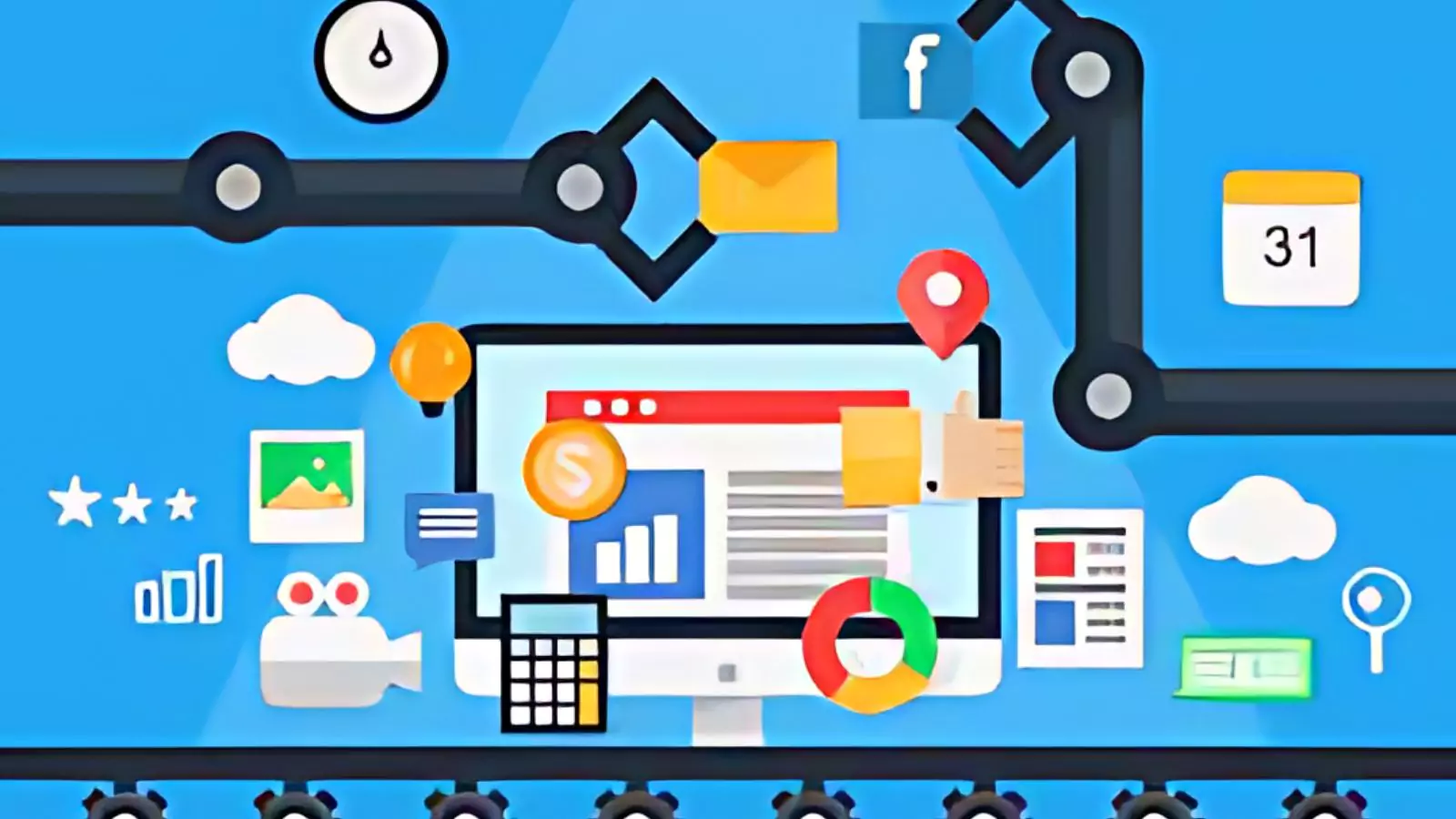 Define Your Goals And Objectives
Define Your Goals And Objectives
Begin by clearly defining your goals for content automation. Whether your goals are to improve efficiency, increase consistency, or enhance personalization, having a clear set of objectives will guide your automation efforts.
Identify Areas For Automation
Examine your content production process to pinpoint tasks suitable for automation. Focus on repetitive and time-consuming tasks or areas where automation can offer significant benefits, such as content generation, curation, optimization, distribution, or management.
Choose The Right Tools And Technologies
Research and assess content automation tools and technologies that align with your requirements. Consider factors such as compatibility with existing systems, ease of use, scalability, and integration capabilities with other tools or platforms.
Develop A Content Strategy
Create a comprehensive content strategy that defines the type of content to produce, the target audience, distribution channels, and desired outcomes. This strategy will guide your content marketing automation efforts and ensure they are aligned with your overall objectives.
Prioritize Personalization And Relevance
Ensure your content automation efforts focus on personalization and relevance for your audience. Use AI-driven tools to analyze user preferences and behavior to deliver content that engages and meets the needs of your target audience.
Maintain Quality Control
Implement quality control measures to ensure that automated content meets your organization’s standards for quality, consistency, and accuracy. Establish a review process involving human oversight to verify and refine the content produced by automation tools.
Monitor Performance And Optimize
Continuously monitor the performance of your automated content and use data-driven insights to make improvements. Analyze key performance indicators (KPIs) and adjust your content strategy, tools, or processes as needed to achieve your goals.
Train Your Team
Make sure your team is well-trained in using content automation tools and understands their purpose. Provide the essential training and support to assist them in adapting to new processes and using the technology effectively.
Continuously Iterate And Improve
Content automation is an ongoing process that requires regular review and refinement. Continuously gather feedback, assess the effectiveness of your automation efforts, and make adjustments to optimize your system and meet your objectives.
Challenges Of Content Automation
 Content automation, while beneficial, presents several challenges that need to be addressed to ensure effective implementation:
Content automation, while beneficial, presents several challenges that need to be addressed to ensure effective implementation:
1. Transparency
Transparency is crucial in marketing content automation. Readers should be aware of who created the content. For instance, Sports Illustrated faced significant backlash after publishing machine-generated articles with author bios that included synthetic identities. Ensuring clear disclosure about the nature of automated content helps maintain trust and credibility.
2. Quality
While machines can produce content efficiently, they often require human oversight to ensure quality. Automated tools may not possess the nuanced understanding and creative touch that human writers provide. It’s essential to have a review process in place to monitor and enhance the quality of automated content, ensuring it meets your standards and effectively communicates your message.
Read More,
Best Content Automation Tools To Streamline Your Business 2022
A User’s Guide To Successful Content Publishing In 2024
Wrapping Up
Content automation serves as a transformative tool for businesses and marketers aiming to streamline their content strategies. By leveraging automation, you can enhance efficiency, maintain consistency, and scale your efforts without sacrificing quality. Social media automation tools like Socinator can be particularly valuable, offering comprehensive features for automating social media management, analyzing performance, and optimizing engagement.
The key is to implement automation thoughtfully- tailoring it to your specific needs and continuously optimizing your processes. As you embrace content automation, remember that it’s not a replacement for creativity and human touch but a powerful ally that can free up your time for strategic thinking and innovation.
With the right tools and approach, you can unlock new levels of productivity and engagement, driving your content efforts to new heights.
Better processes, better results.
FAQs
Q: What is an example of content automation?
Using automation tools, companies can implement drip campaigns, triggered emails, and autoresponders. For instance, after a customer makes a purchase, an automated follow-up email can be sent- to thank them and recommend related products. This approach aids in nurturing customer relationships and increasing engagement.
Q: What is content automation in SEO?
Content automation in SEO involves using software to automatically generate or populate content. Examples include marketing materials such as blog posts, product descriptions, social media posts, and site pages typically listed in a traditional web design checklist.
Q: Can content automation improve audience engagement?
Yes, content automation can improve audience engagement by ensuring timely and consistent content delivery, personalizing content based on audience segments, and freeing up time for marketers to focus on interactive and engaging activities.\



